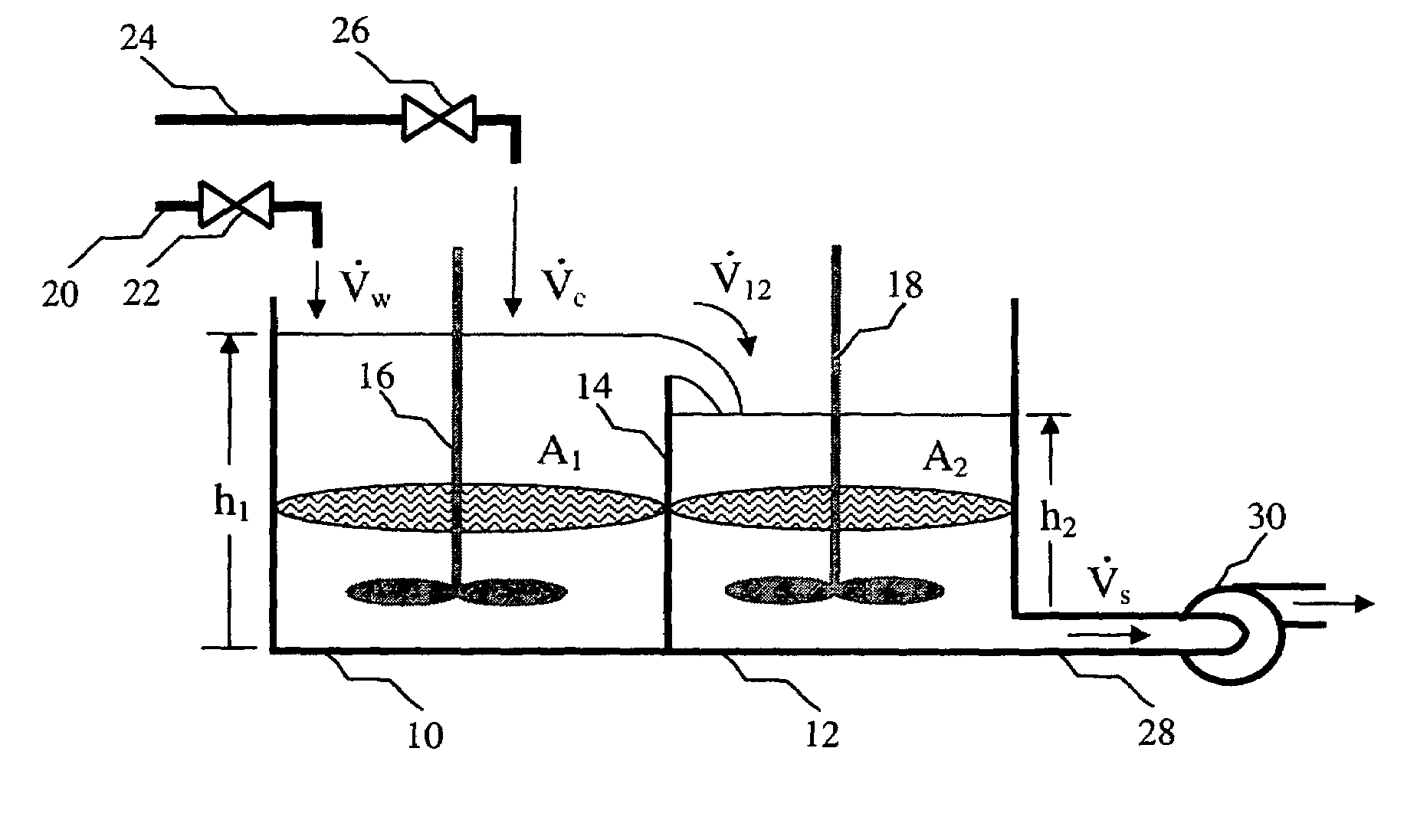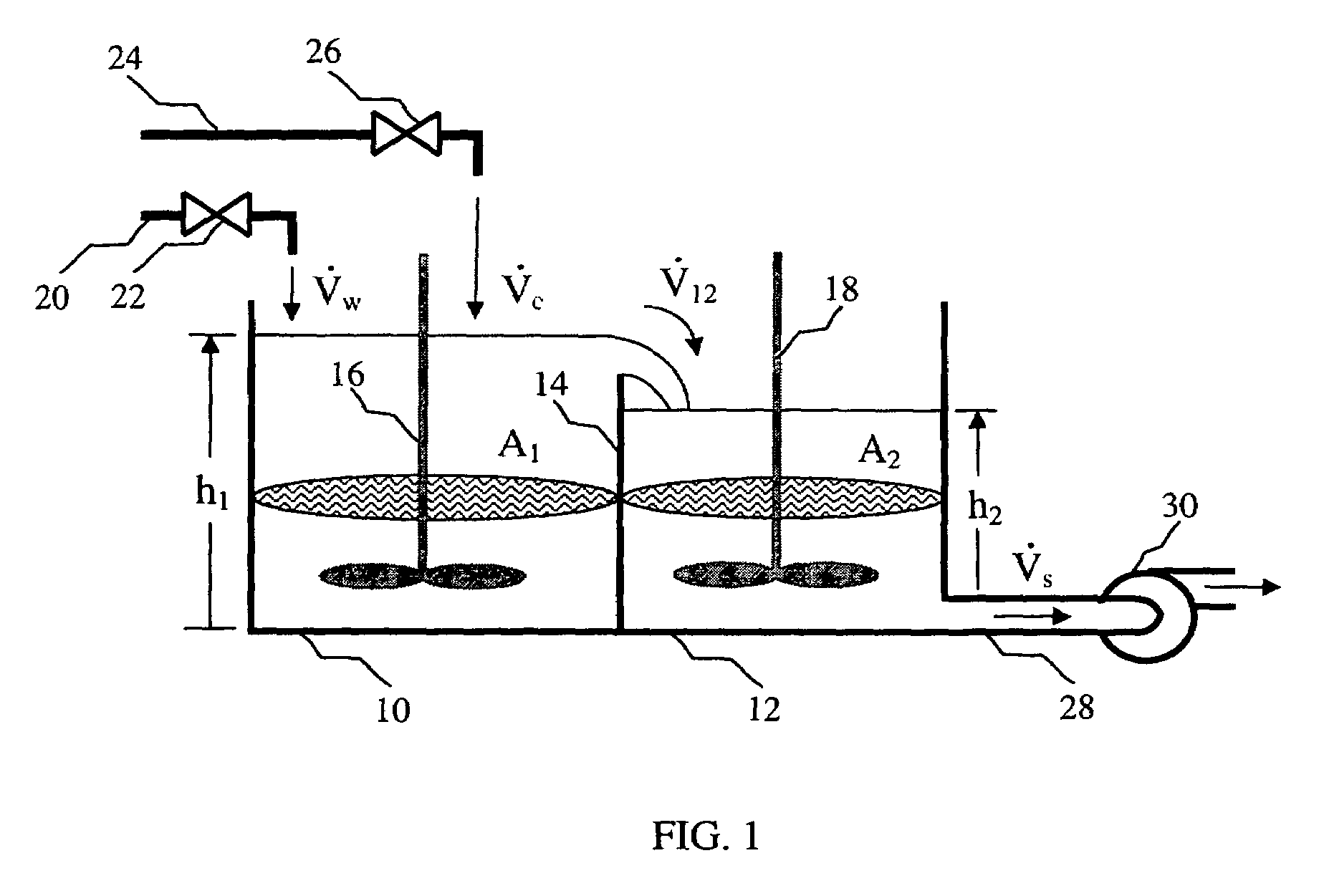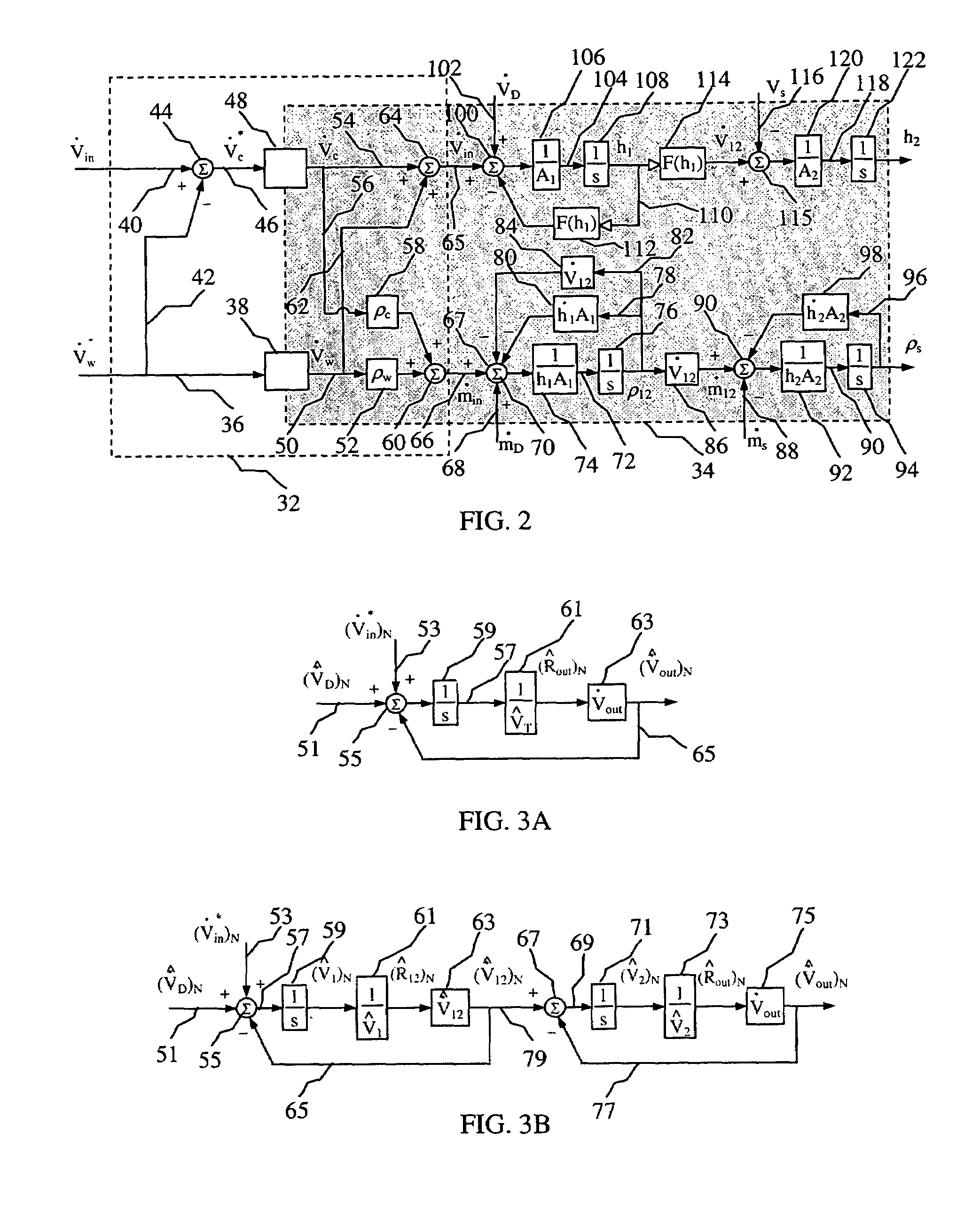Methods for determining a volumetric ratio of a material to the total materials in a mixing vessel
a technology of volumetric ratio and mixing vessel, which is applied in the direction of sealing/packing, well accessories, instruments, etc., can solve the problems of affecting the quality of the output slurry, the time-lag in the response of the water and cement control loop, and the inability of densitometers to measure the output slurry density, etc., to achieve tighter control over the relative volumes of materials and reduce the overall cost of the process
- Summary
- Abstract
- Description
- Claims
- Application Information
AI Technical Summary
Benefits of technology
Problems solved by technology
Method used
Image
Examples
examples
[0101]The invention having been generally described, the following examples are given as particular embodiments of the invention and to demonstrate the practice and advantages thereof. It is understood that the examples are given by way of illustration and are not intended to limit the specification or the claims to follow in any manner.
[0102]The mixing apparatus shown in FIG. 1 was assembled and operated using the embodiment of the control scheme shown in FIG. 6. Various parameters of the mixing process were determined and plotted as a function of time in FIG. 10. More specifically, line 550, labeled as the slurry recirculation density, represents the change in the measured slurry density in the first vessel. Line 552, labeled as the Ve_density represents the change in the density as given by the volumetric ratio observer with active disturbance decoupling. Line 554, labeled as the tub level, represents the change in the height of the slurry in the second vessel. Line 556, labeled ...
PUM
| Property | Measurement | Unit |
|---|---|---|
| time | aaaaa | aaaaa |
| volume | aaaaa | aaaaa |
| height | aaaaa | aaaaa |
Abstract
Description
Claims
Application Information
 Login to View More
Login to View More - R&D
- Intellectual Property
- Life Sciences
- Materials
- Tech Scout
- Unparalleled Data Quality
- Higher Quality Content
- 60% Fewer Hallucinations
Browse by: Latest US Patents, China's latest patents, Technical Efficacy Thesaurus, Application Domain, Technology Topic, Popular Technical Reports.
© 2025 PatSnap. All rights reserved.Legal|Privacy policy|Modern Slavery Act Transparency Statement|Sitemap|About US| Contact US: help@patsnap.com



